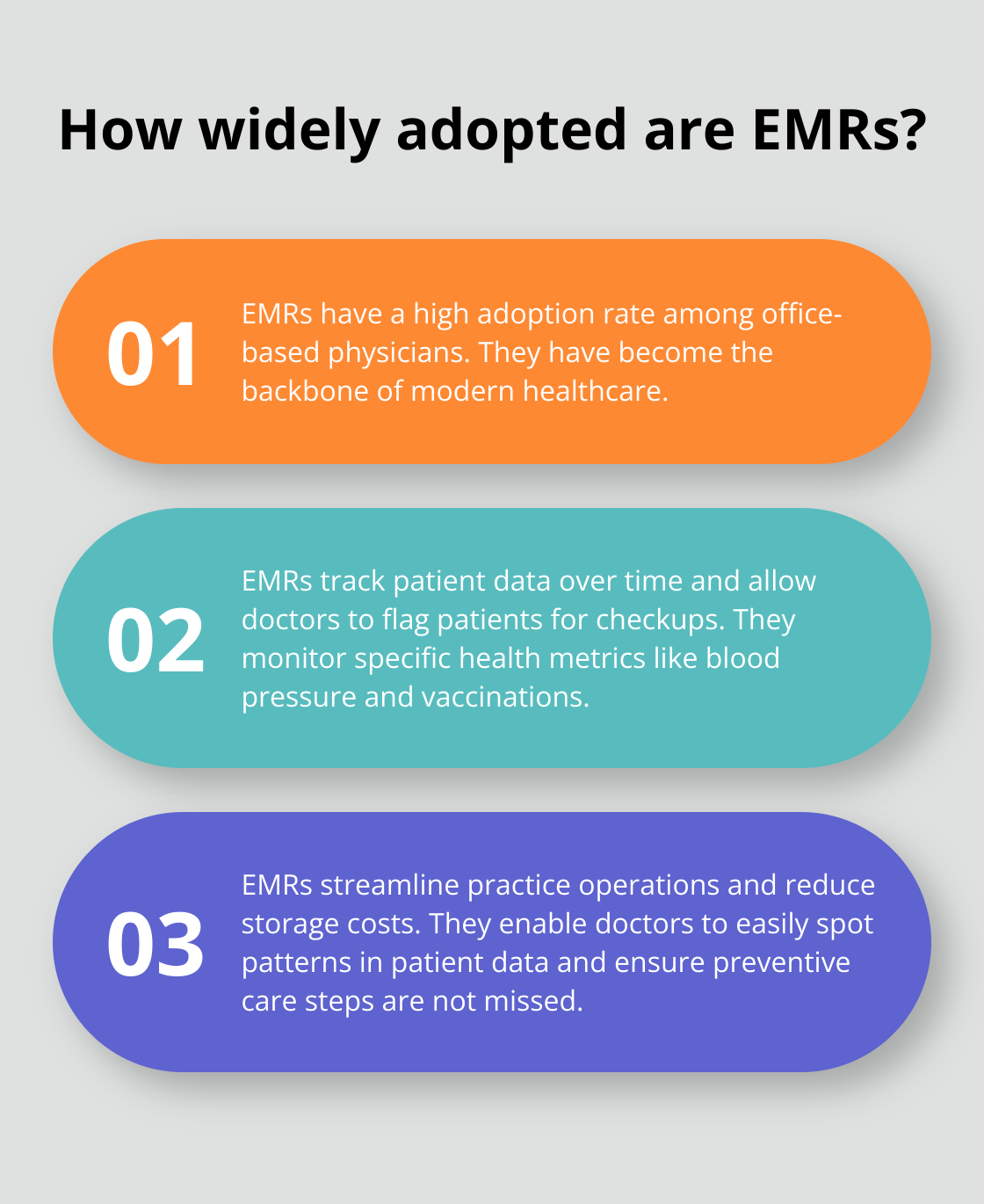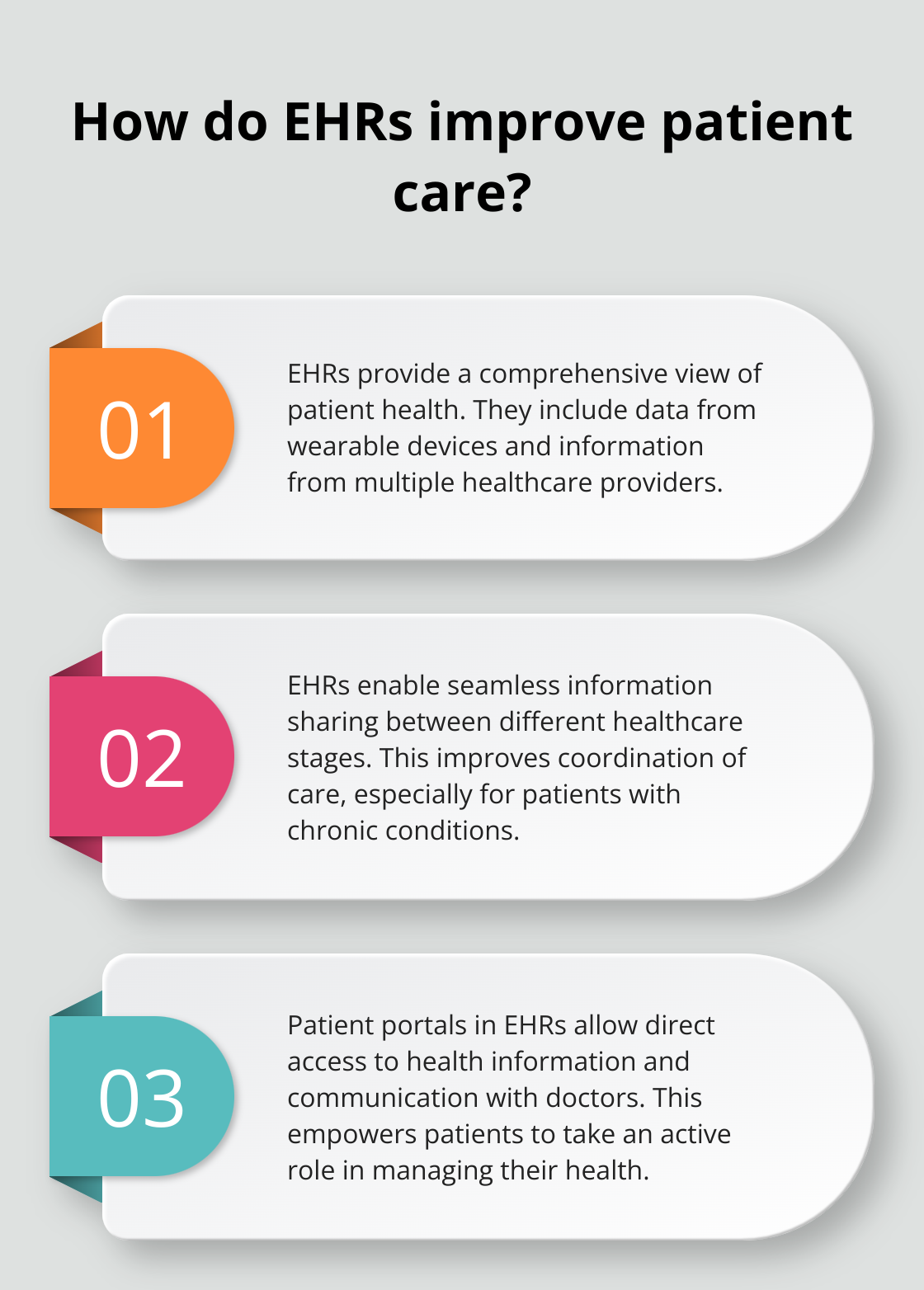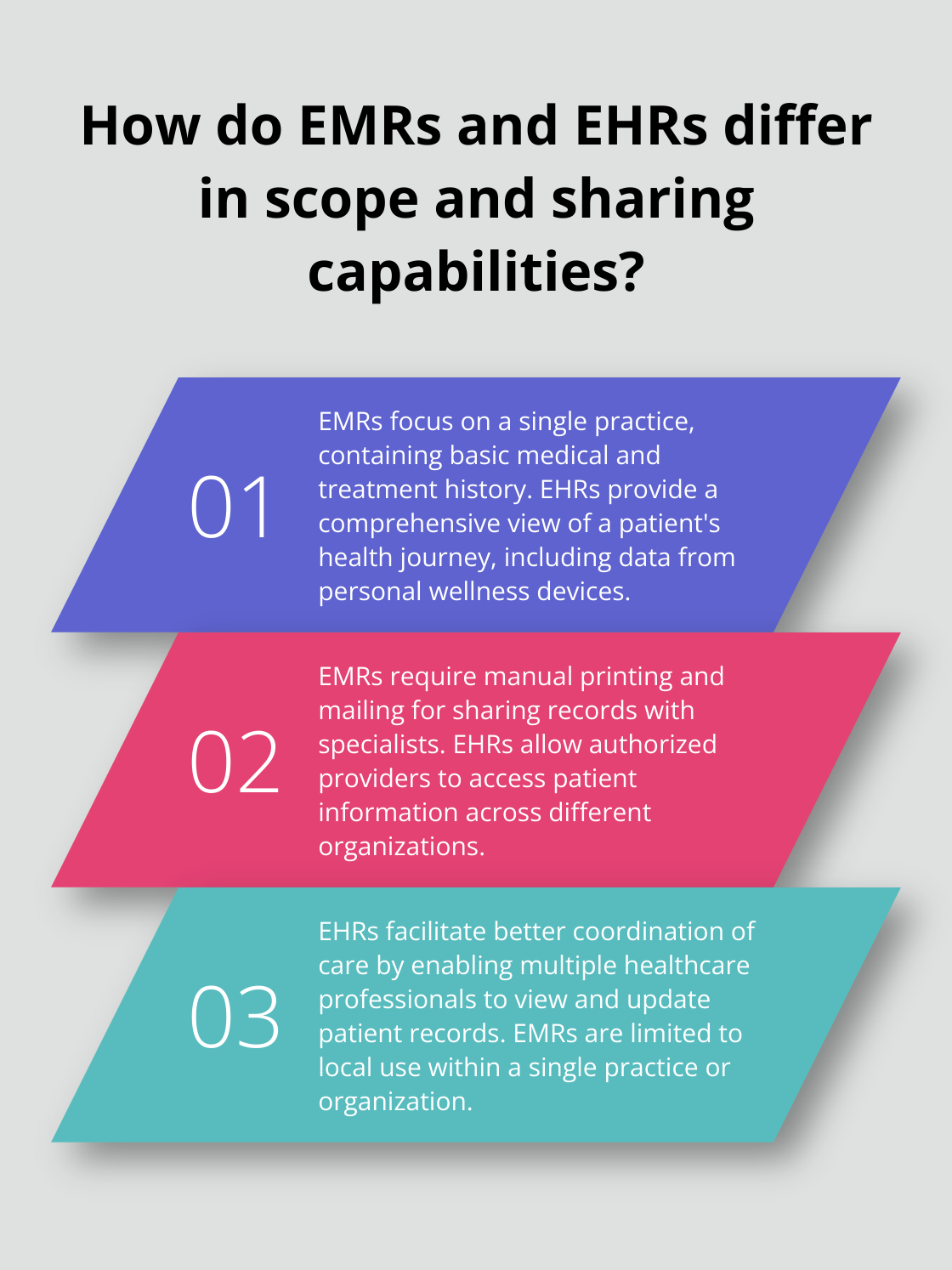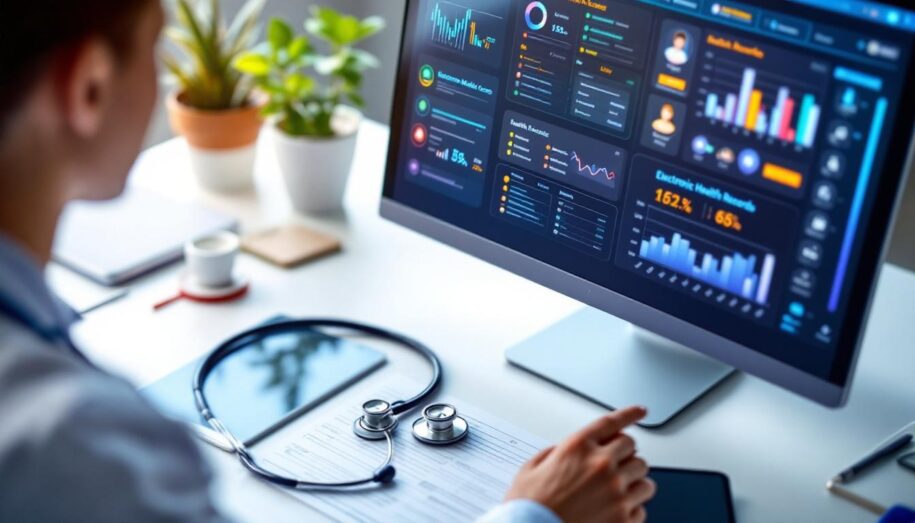So, over at ScriberJoy, there’s a common mix-up buzzing around — EMRs vs. EHRs. What’s the deal here? These acronyms get thrown around like confetti, but they aren’t just two peas in a pod. No, sir. They’re unique beasts with their own quirks and benefits. Here’s the catch: if you’re in healthcare and want to nail your digital records game — knowing these differences isn’t just nice to have… it’s a must.
Now, in this post, we’re going to untangle this web, spotlight the biggies that set EMRs and EHRs apart, and give you the lowdown on which digital route might just be your practice’s new BFF. Buckle up.
What Are Electronic Medical Records?
Definition and Core Features
Let’s break it down. Electronic Medical Records (EMRs)-think of them as the digital rebirth of those dusty paper charts in your doctor’s office. They’re packed with all the medical happenings and treatments of a patient within one practice. Sure, they’re a big step up from paper, but they’re not without issues.

What do they do? EMRs track patient data over the long haul. They let docs-and we’ll call them “docs” for simplicity-flag patients who need checkups or preventive screenings. Plus, they keep tabs on specifics, like blood pressure and those all-important vaccinations.
The adoption rate? Sky-high. Most office-based physicians are on board. Why? Because EMRs are now the backbone of modern healthcare. Plain and simple.
Benefits of EMRs in Practice
Efficiency is the name of the game here. EMRs are the champions of streamlining practice operations. Kiss those bulky paper files goodbye-along with the storage costs and the nightmare of misplaced records. Docs can now track patient data over time with ease. Spotting patterns? A breeze. Flagging patients for preventive visits? Piece of cake.
Picture this: A primary care doc checks a patient’s vaccination history in a flash-ensuring they’re on track with their shots. It’s a level of organization that vastly ups patient care and slashes the chance of missing those vital preventive steps.
Limitations of EMRs
But, hey, let’s not pretend they’re perfect. EMRs have some serious hiccups. Interoperability-or the lack thereof-is a biggie. They’re typically stuck in one practice. Sharing medical data with, say, other healthcare providers? More of a headache than it should be.
Case in point: If a patient’s off to see a specialist, getting their EMR data across is no walk in the park. We’re talking printing, mailing-hello, delays-and hello to possible errors creeping in.
And let’s chat about patient engagement. EMRs aren’t the best wingmen in this area. They’re designed for docs, not patients. This setup can really put a damper on patients accessing or playing an active role in their health data.
The Push for More Comprehensive Solutions
Enter the need for a next-level solution, folks. More practices are eyeing comprehensive systems that promise flexibility and robust patient engagement features. Healthcare pros are catching on: storing data isn’t enough. We need systems that make sharing info a breeze and get patients involved like never before.
The writing’s on the wall-EMRs’ limitations are becoming hard to ignore as we march towards more integrated healthcare models. And that, my friends, sets the stage for the rise of Electronic Health Records (EHRs). These bad boys tackle many of the EMR shortcomings, offering a more holistic-and dare I say, patient-friendly-take on healthcare.
What Are Electronic Health Records?
A Comprehensive Approach to Patient Data
Electronic Health Records (EHRs) – they’re the next-gen leap in digital healthcare docs. Different from their older sibling, the EMRs, EHRs embrace a whole-person, patient-centric vibe when it comes to managing health info.

These babies aren’t just a laundry list of conditions – they give you the entire patient saga, from Aunt Sally’s peanut allergy to Grandpa Joe’s bout with high blood pressure. Toss in data from that snazzy wrist gadget tracking your steps, and you’ve got a powerhouse of info for docs to chew over.
Picture this – a heart doc taps into an EHR and voila! – instantly sees every med the patient’s been decked out with, even those whispered by other specialist gurus. Dangerous drug bromances? Not happening. Quality of care? It’s getting a serious upgrade.
Interoperability: The Key to Coordinated Care
Cue the magic of EHRs – sharing across different health stages. We’re talking major league info exchange – true coordination’s golden child.
Say you’ve got a regular doc who needs to loop in a specialist on a case. Bam! Relevant patient scoop gets teleported straight over, like some Star Trek data beam. For folks juggling chronic conditions and docs like a circus act, this sharing cuts down the “let me give you my med life story” bit.
Patient Empowerment Through Access
EHRs – not just for docs. They’re built with patient power in mind. Those patient portals? They put health info, test results, and directly hitting up your doc’s inbox all at your fingertips.
What does that do? It flips the script, letting you dive into the pilot seat of your health journey. Track health stats over time, set reminders so your meds don’t dust up, and schedule your next check-up like you’re booking concert tickets.
Advanced Clinical Decision Support
EHRs pack a punch with clinical decision support tools – like having a health-savvy sidekick. These alerts give docs a heads up about drug allergies or flag that overdue preventative screening.
But hold tight – a study showed that even the tech-jacked HIMSS stage 6 hospital could trip over more med errors post-EHR. So, keeping implementation sharp and monitoring tight is the name of the game.
Choosing the Right EHR System
Options galore with EHRs, but picking the right one? It’s like choosing a partner – look for what suits your practice flow, easy peasy navigation, smooth integration capacity, and gets what you specialize in.
Switching from EMRs to EHRs isn’t just a facelift – it’s a seismic change in managing and sharing health stories. As we inch closer to more joined-up healthcare landscapes, knowing these systems’ ins and outs? It’s crucial. So, buckle up as we dive into those differences.
EMR vs EHR: Key Differences Explored
Scope: From Narrow Focus to Big Picture
EMRs are like those dusty paper charts in your doc’s office… only digital. All your medical and treatment history in one neat package, but just within a single practice. EHRs? They’re the fancy cousins. Not just your basic clinical data-these babies give a bird’s-eye view of your health journey. All clinicians involved? Check. Plus, they even pull in data from personal wellness gadgets-Fitbit, I’m looking at you-giving healthcare pros the intel they need to make the calls. Yeah, they can even do that.
Sharing Capabilities: Local Hand-Off vs. Global Reach
EMRs like to stay home. You need to see a specialist? Your primary’s gotta hit print and snail mail your records. EHRs, on the flip side, are the social butterflies. They love sharing. Authorized providers can peek into your health info across different organizations. Your cardiologist can see what your primary prescribed-keeping everyone on the same page and avoiding those awkward conflicting treatments.
Patient Engagement: Passive Observer vs. Active Participant
EMRs are mainly for your healthcare providers-giving you, dear patient, only a little peek inside. But EHRs? They’re putting you in the driver’s seat. They come packed with patient portals, letting you check out your health records, book those appointments, even chat up your provider directly. This interactive vibe tends to lead to better health outcomes. When patients get their hands on their health info, they stick to their meds and feel more in control (says a study from the Office of the National Coordinator for Health Information Technology).
Compliance and Standards: Just the Basics vs. Overachiever
Both EMRs and EHRs have to play by HIPAA’s rules, but EHRs like to go the extra mile. We’re talking different designs, functions, and fancy interfaces. Features like clinical decision support-they’re there to nudge providers about potential drug drama or remind them of preventive care. That’s what advanced compliance looks like.
Technological Savvy: Basic Functions vs. The Whole Nine Yards
EMRs keep it simple. Just a digital filing cabinet to input and fetch patient data within a practice. EHRs, well, they bring the razzle-dazzle. We’re talking advanced analytics, tools for population health management, and the ability to play nicely with other healthcare systems. This tech advantage gives EHRs the chops to support more comprehensive and coordinated care-across various providers and settings.

Final Thoughts
Electronic medical records vs electronic health records-two sides of the same digital coin in healthcare management. EMRs are basically digital paper charts within a doctor’s practice, while EHRs offer the whole shebang-a comprehensive, interconnected healthcare solution. This choice isn’t just about tech… it’s about the quality of patient care, efficiency, and keeping regulators happy.

As healthcare does its usual thing (evolve), digital health records will get a makeover-AI here, better interoperability there. It’s like giving the system a brain and a translator. These upgrades? They’ll tailor treatment plans better and knock down walls between healthcare settings. The future of documenting health? Embrace these digital tools, folks. Enhance care, streamline workflows… you see where this is going.
ScriberJoy’s got your back with AI-powered medical transcription software. It’s like a sidekick for EHR systems, ensuring medical notes hit the mark in accuracy. More time for patient care, less time for drowning in papers (everyone wins, seriously). Jumping on the right digital tools train will have a big impact on delivering stellar patient care in our ever-more connected healthcare world.

Leave a Reply
You must be logged in to post a comment.